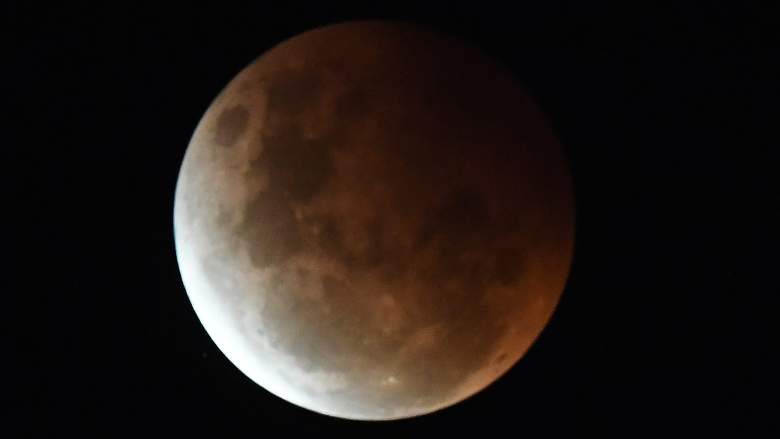
Getty A partial lunar eclipse can sometimes take on a reddish hue.
Tonight a partial lunar eclipse is taking place during the November “beaver moon.” Although technically this is a partial eclipse, at times the moon will reach up to 99.1% coverage, which is about as close as you can get to totality without being a full eclipse. If the weather isn’t cooperating, then you can watch the lunar eclipse online in the live streams below.
According to NASA, the peak of the eclipse will take place around 4:03 a.m. Eastern/3:03 a.m. Central/2:03 a.m. Mountain/1:03 a.m. Pacific on Friday, November 19. If you’re interested in seeing the moon when it has a reddish hue, this will last from about 3:45 a.m. Eastern to 4:20 a.m. Eastern. The entire process starts at 1:02 a.m. Eastern and ending at 7:04 a.m. Eastern, with the partial eclipse portion lasting from 2:19 a.m. Eastern to 4:20 a.m. Eastern.
Watch the Eclipse Online
You can watch the partial lunar eclipse (the beaver moon) tonight in a variety of live streams, including the selection included below.
The first is from TimeandDate.com. If the video doesn’t appear on your browser below, you can watch it here. Live coverage begins at 7:00 UTC (which is 2 a.m. Eastern) on November 19.
Virtual Telescope is also hosting a live stream for the lunar eclipse. If the video doesn’t appear on your browser below, you can watch it here.
The YouTube channel noted, “19 November 2021, the Moon will offer a beautiful partial eclipse, well visible from the Americas and from the Far East. As in the past, the Virtual Telescope Project will partner with some great astro-imagers from all around the planet to bring to you the stunning beauty of such a precious event...”
The above stream begins at 7:00 UTC or 2 a.m. Eastern on November 19.
Griffith Observatory will also broadcast the eclipse, weather permitting. If the video doesn’t appear on your browser below, you can watch it here.
You can also see the eclipse online via the Lowell Observatory. If the video doesn’t appear on your browser below, you can watch it here.
Lowell Observatory wrote: “Watch the 2021 Partial Lunar Eclipse with us! Starting at 12:15 am on November 19, we’ll be showing you live views of the eclipse through our 14″ PlaneWave and the portable Vixen refractor. Educators will also discuss the science of eclipses, the best ways to view them, Lowell’s history with the Moon, and much more!”
The Lowell Observatory is located about five minutes from downtown Flagstaff, Arizona.
When Is the Next Eclipse?
The next full lunar eclipse in the U.S. won’t happen until May 15-16, 2022, according to Time and Date. This will be visible from North and South America, Europe, Africa, and parts of Asia. This is another major lunar eclipse known as a blood moon.
The next total solar eclipse in the U.S. won’t happen until April 8, 2024. But we won’t see another coast-to-coast solar eclipse in the U.S. until August 12, 2045.
A total solar eclipse outside the U.S. will be visible on December 4 in southern parts of Australia, Africa, South America, and regions of the Pacific, Atlantic, Indian Ocean, and Antarctica.
A partial solar eclipse outside the U.S. will be visible on April 30, 2022, in south/west South America, the Pacific Ocean, the Atlantic, and Antarctica. Another partial one outside the U.S. will occur on October 25, 2022, in Europe, South/West Asia, North/East Africa, and the Atlantic.
READ NEXT: Hallmark’s Christmas 2021 Lineup of Movies